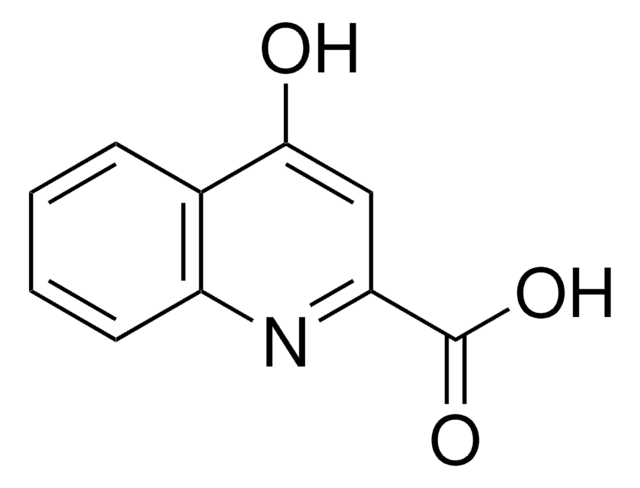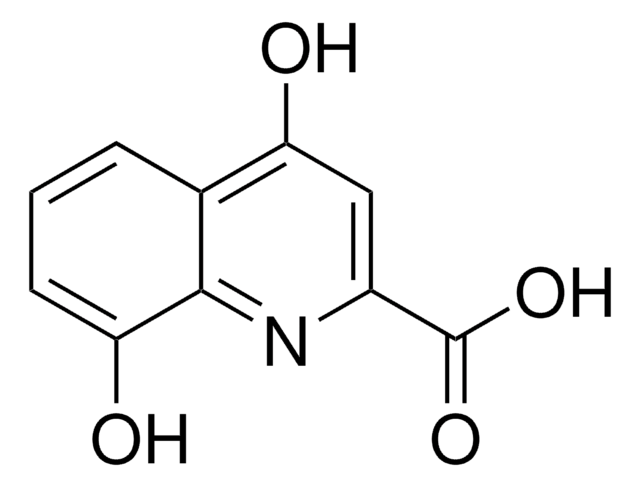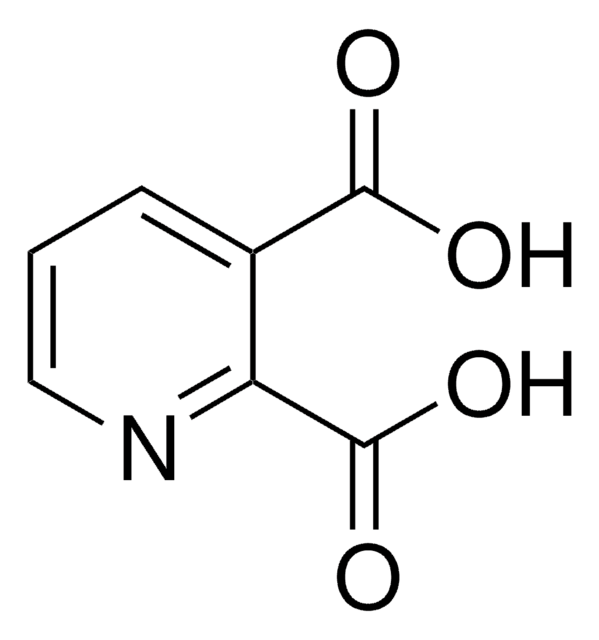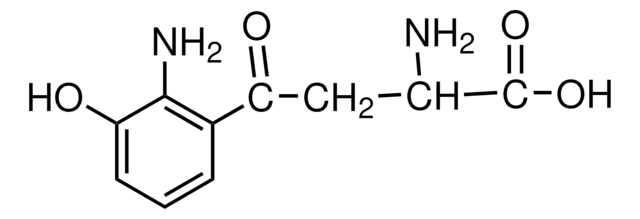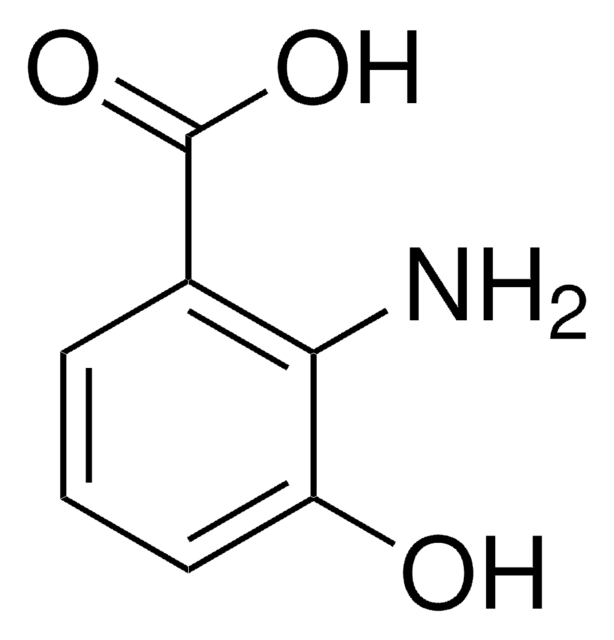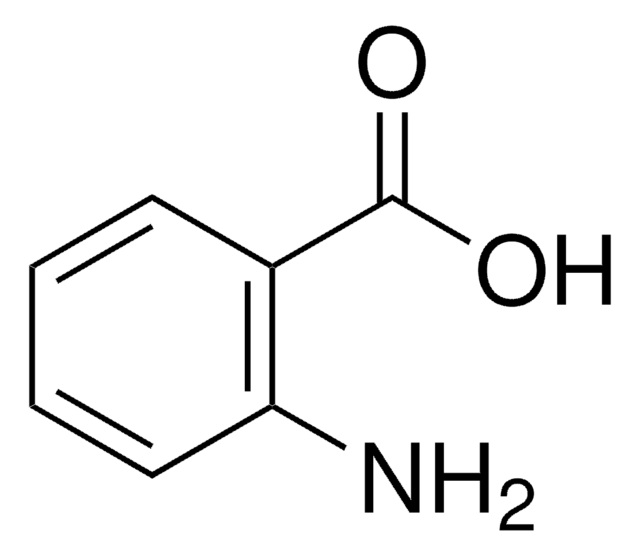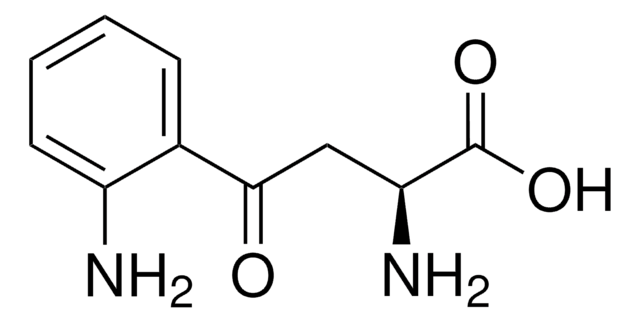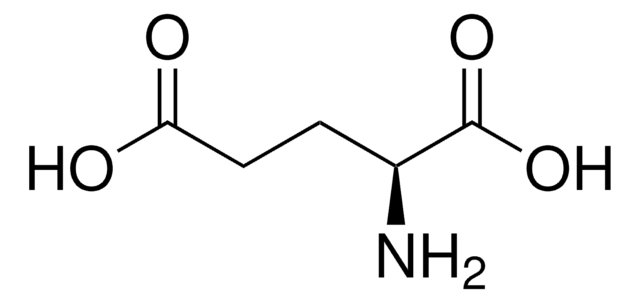D120804
Xanthurenic acid
96%
Synonym(s):
4,8-Dihydroxyquinaldic acid, 4,8-Dihydroxyquinoline-2-carboxylic acid
Sign Into View Organizational & Contract Pricing
All Photos(1)
About This Item
Empirical Formula (Hill Notation):
C10H7NO4
CAS Number:
Molecular Weight:
205.17
Beilstein:
185954
EC Number:
MDL number:
UNSPSC Code:
12352100
PubChem Substance ID:
NACRES:
NA.22
Recommended Products
Assay
96%
form
powder
mp
297-298 °C (dec.) (lit.)
SMILES string
OC(=O)c1cc(O)c2cccc(O)c2n1
InChI
1S/C10H7NO4/c12-7-3-1-2-5-8(13)4-6(10(14)15)11-9(5)7/h1-4,12H,(H,11,13)(H,14,15)
InChI key
FBZONXHGGPHHIY-UHFFFAOYSA-N
Looking for similar products? Visit Product Comparison Guide
Application
Xanthurenic acid can be used as a substrate for the synthesis of:
- Silica-gel functionalized xanthurenic acid (4, 8-dihydroxyquinoline-2-carboxylic acid) as an adsorbent for metal ions.
- N, N′-bis-((8-hydroxy-7-quinolinyl)methyl)-1,10-diaza-18-crown-6 ethers as fluorescent sensors of magnesium in living cells via one-pot Mannich reaction.
- Poly-xanthurenic acid (poly-Xa) for biosensing applications.
Storage Class Code
11 - Combustible Solids
WGK
WGK 3
Flash Point(F)
Not applicable
Flash Point(C)
Not applicable
Personal Protective Equipment
dust mask type N95 (US), Eyeshields, Gloves
Choose from one of the most recent versions:
Already Own This Product?
Find documentation for the products that you have recently purchased in the Document Library.
Kyle Jarrod McLean et al.
Scientific reports, 9(1), 13131-13131 (2019-09-13)
Malaria parasites have a complex life cycle that includes specialized stages for transmission between their mosquito and human hosts. These stages are an understudied part of the lifecycle yet targeting them is an essential component of the effort to shrink
Poly-xanthurenic acid modified electrodes: An amperometric sensor for the simultaneous determination of ascorbic and uric acids.
dos Santos Silva F D A, et al.
Sensors and Actuators B, Chemical, 168, 289-296 (2012)
Synchronous electrosynthesis of poly (xanthurenic acid)-reduced graphene oxide nanocomposite for highly sensitive impedimetric detection of DNA.
Yang T, et al.
ACS Applied Materials & Interfaces, 5(9), 3495-3499 (2013)
Electrochemical determination of ascorbic acid using poly (xanthurenic acid) and multi-walled carbon nanotubes
Lin K-C, et al.
International Journal of Electrochemical Science, 7(12), 12752-12763 (2012)
Photooxidation of Lens Proteins with Xanthurenic Acid: A Putative Chromophore for Cataractogenesis.
Roberts J E, et al.
Photochemistry and Photobiology, 74(5), 740-744 (2001)
Our team of scientists has experience in all areas of research including Life Science, Material Science, Chemical Synthesis, Chromatography, Analytical and many others.
Contact Technical Service